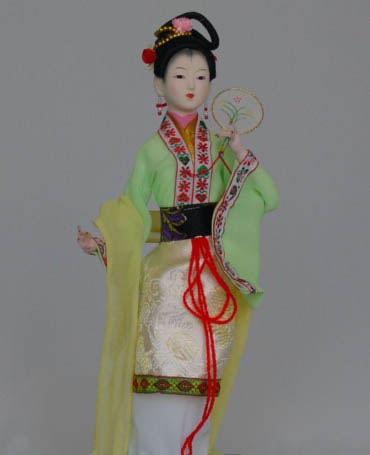Beijing Silk Figurines
Updated: 2007-06-27 08:45

Made of thin silk, gauze, damask silk, etc, silk figurines produced in Beijing are a Chinese traditional handicraft. Folk cloth-pinpricked and color-pricked toys and other handicrafts are all closely connected with handcrafting silk figurines. The trade of silk and knit goods, which has existed in China since ancient times, created an optimal environment for the birth of silk figurines.
Beijing silk figurines originated in the Northern Song Dynasty (960-1127) and have a history of more than 1,000 years. In ancient times, the Chinese used bamboo and paper as materials for various kinds of craftworks.
As early as in the Tang Dynasty (618-907), color-pricked handicrafts were prevalent in the southern countryside of Southeast China's Fujian Province. In the beginning, people used paper to make different kinds of birds, beasts, flowers and fish. Later, they borrowed themes from popular drama stories and legends and turned them into flower lanterns for display. Gradually, this handicraft underwent many improvements. Written records show that folk artists of the Northern Song Dynasty were able to shape damask silk to form human figures, and made clothes from brocade.
In the Qing Dynasty (1644-1911), thin silk, gauze and damask were made into such images as the God of Longevity and Ma Gu, the Goddess of Longevity, to give as birthday presents to an elder. And this kind of craftwork often appeared in the houses of high officials. However, it is a pity that the craft perished for many years, only to be revived in 1954.
In the mid 1950s, after new China was founded, the country was invited to participate in an international toy fair held in India. Via the All-China Women's Federation, the Ministry of Culture assigned the task of designing exhibits for the fair to artists Ge Jing'an, Li Peifen, Du Chongpu, etc. They paid great efforts in collecting documentary materials from different sources and conducting much research to finally produce five works depicting women from ethnic minorities. The works received a warm welcome at the fair. Later, the group set up a research team on artistic figurines in Beijing, and successively produced many new works. The silk figurines designed took on the new China climate and the characteristics of ethnic groups.

